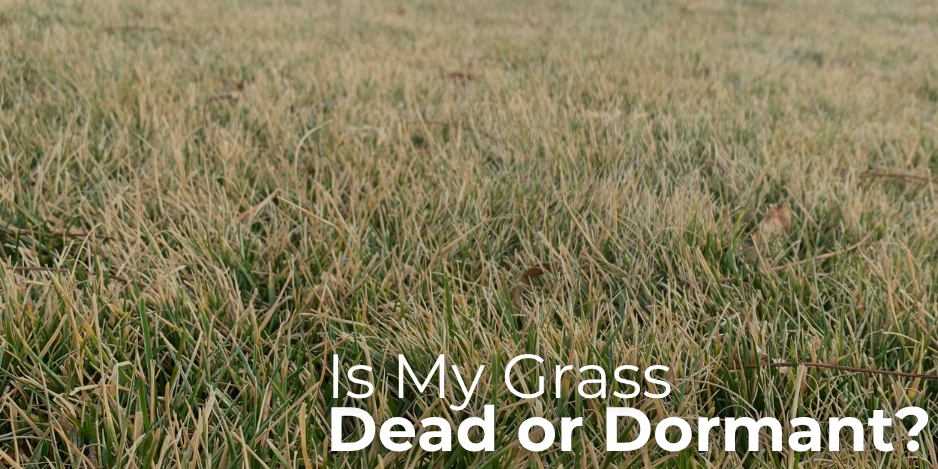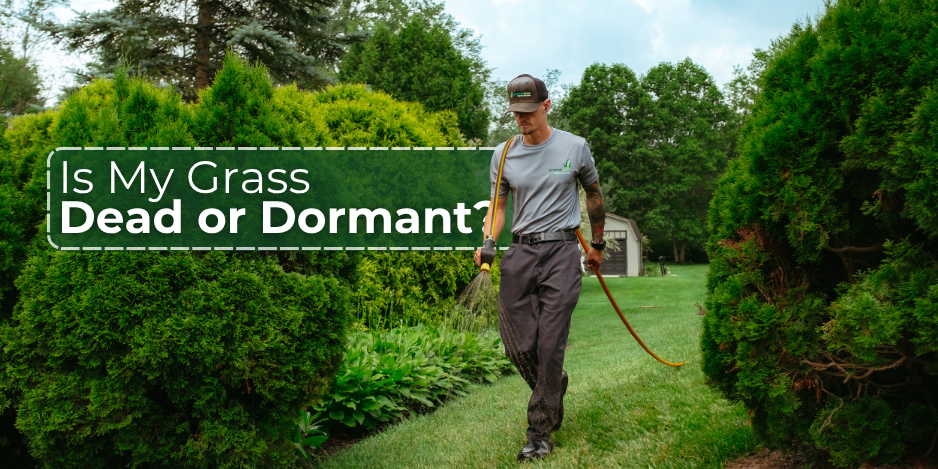Is My Lawn Dead or Dormant? A Guide for Northeast Ohio Homeowners
When your lawn turns brown and crunchy in late summer or during early fall, it’s easy to assume the worst: that your grass is dead. But more often than not, what you’re seeing is dormancy, a natural defense mechanism that cool-season grasses use to survive drought, heat, or stress. In Northeast Ohio, understanding the types of turfgrass in your lawn is the key to knowing what’s really going on beneath the surface.

What Does Dormant Grass Look Like?
Dormant grass typically turns straw-colored, looks dry, and may feel brittle underfoot. Unlike dead grass, dormant grass retains its crown (the base of the plant), which remains alive underground. You might notice your lawn looks patchy or faded, but with the right care and conditions, it will bounce back.
Why Grass Goes Dormant
Grass goes dormant to protect itself during stressful conditions, especially:
- High heat and drought
- Nutrient deficiencies
- Soil compaction
- Seasonal changes
While dormancy can be alarming, it’s a survival tool. Watering during dry spells, minimizing foot traffic, and aerating compacted soil can all help your grass recover more quickly.

Common Grass Types in Northeast Ohio & How They Handle Dormancy
1. Kentucky Bluegrass (KBG)
Dormancy Behavior: KBG is known for its lush color and fine texture, but it’s also quick to go dormant during drought. Though slow to germinate, its rhizome growth helps it recover well.
Tip: Don’t panic if it browns—this grass is resilient and bounces back well with cooler temps and water.
2. Perennial Ryegrass (PRG)
Dormancy Behavior: PRG greens up fast and provides quick cover, but it’s more vulnerable to heat and drought stress.
Tip: In mixed lawns, PRG may appear thinner or browner sooner than KBG or fescues during summer dormancy.
3. Tall Fescue (Turf-Type)
Dormancy Behavior: More drought-tolerant than KBG or PRG, tall fescue is slower to go dormant and often stays greener longer.
Tip: Because it grows in clumps, areas may still appear patchy if other grasses around it go dormant.
4. Fine Fescues
Dormancy Behavior: These grasses are shade-tolerant and hardy but can become sparse if overfertilized or mowed too short.
Tip: Fine fescues hold up well in low-water areas and shaded zones—if browning occurs, it’s often mild and localized.

Is It Dormant or Dead? Here’s How to Tell
Try the tug test: Gently pull on a section of brown grass. If it resists and stays rooted, it’s dormant. If it comes out easily, it may be dead.
Maintenance Tips for Dormant Grass
- Water deeply but infrequently: Aim for 1″ of water per week during dry spells to keep roots alive.
- Avoid mowing too short: Keep mower blades higher (3–4 inches) to reduce stress.
- Limit traffic: Dormant lawns are more fragile; foot and pet traffic can cause lasting damage.
- Aerate in late summer/early fall: This improves root growth, water absorption, and seed contact if you’re overseeding.

Fall Recovery & Overseeding
As temperatures drop and rainfall increases, dormant grass often reawakens. This is the best time for aeration and overseeding, especially with grass types that are native or dominant in Northeast Ohio.
Greener Grass Recommends:
- Kentucky Bluegrass: Our top pick for overseeding. It blends well, self-repairs, and matches most existing lawns.
- Tall Fescue: Great for fescue-heavy lawns, especially where resilience and deep rooting are key.
- Perennial Ryegrass: We avoid it for overseeding due to its short lifespan and disease issues.

Get Pricing and Get on Our Schedule
Bottom Line: Dormancy is natural. With a little patience and smart lawn care, your grass will bounce back. Knowing what type of turf you have—and how it handles stress—helps you make the right decisions for a thicker, greener, and healthier lawn.
